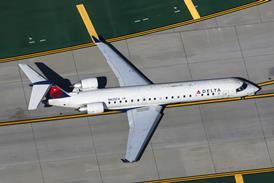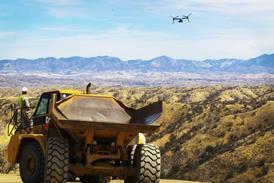DAVID LEARMOUNT / LONDON
More careful analysis of safety performance could yield the same benefits for helicopters as it has had for airlines
Fixed-wing safety programmes, especially in the airline sector, are increasingly methodical, data-driven and transparent. There are signs that the study and practice of helicopter safety may be heading in the same direction, but it lags well behind the airlines, and reports into some accidents or incidents show breathtaking carelessness.
Helicopters are not operated in the same regulatory category as airlines, most being private, corporate, air taxi or specialist airwork aircraft, so the minimum equipment or crew specification is less demanding. It is only when the aircraft enter the realm of public transport operations - especially in demanding environments - that studies have been done, equipment specifications improved and regulations tightened, and safety performance has responded positively.
Safety agencies such as the US National Transportation Safety Board (NTSB) have tended, unsurprisingly, to focus their resources on sectors where the largest number of people are affected, so motoring and airline travel have benefited and helicopters (except for the corporate sector that sets its own high standards) are left to do their best under the regulations as they stand. This year, however, the NTSB has directed its attention to a specific category of accident that has come to the fore among helicopter operations in the past few years: crashes that occur in flat light and whiteout conditions. The NTSB describes flat light as "the diffuse lighting that occurs under cloudy skies, especially when the ground is snow-covered. Under flat light conditions there are no shadows cast, and the topography [or texture] of snow-covered surfaces is impossible to judge."
The board gives details of five such helicopter accidents in the last five years, three of which occurred in the same place involving aircraft from the same company on the same day - 10 September, 1999. The location was the Juneau ice field, and there were no fatalities. But the day before, seven people on a helicopter sightseeing flight died in a crash in a different part of the same ice field (Flight International, 18-24 April, 2000). The NTSB notes that the pilot was not instrument rated nor required to be, the weather conditions were technically visual flight rules (VFR), but the nose-down attitude and velocity of the helicopter at impact were consistent with loss of control in flight and spatial disorientation.
Since 1997, says the agency, there have been 23 flat light accidents, almost all in Alaska, and all but eight involving fixed wing aircraft. The accidents tend to be the result of pilots losing visual cues, including a natural horizon, losing the ability to judge height above terrain or even to see it at all. In a letter to the Federal Aviation Administration, the NTSB has made three recommendations for FAA regulatory action regarding commercial passenger-carrying helicopter flights that routinely encounter flat light/whiteout conditions:
All helicopter pilots who operate such flights should possess a current helicopter-specific instrument rating; the operators should include flying in flat light/whiteout conditions in their pilot training programmes and manuals; the helicopters should be equipped with radar altimeters.Vision risks
Apart from the most common cause of general aviation accidents - continuing a VFR flight into instrument meteorological conditions (IMC) - there are other ways for pilots to lose visual reference at a critical time such as landing, take-off or hover-taxiing. One is for snow or dust to blow up from the rotor wash and surround the aircraft; three such accidents were recorded in 2001. There were also three recorded incidents when pilots hit a lake because it was flat and textureless, giving no height clues.
The accident listing shows that helicopter pilots are disturbingly willing to take risks when there is a safer alternative. An example is the 21 July incident in which a pilot, realising a cabin door was open, left the rotors turning while he got out to close it. Having left the cockpit twice with rotors turning at ground idle, and clearly having trouble closing the door, the third time he left to attempt closure he left the rotors turning at flight idle and the helicopter began to move. As he scrambled back on board the aircraft yawed and rolled over.
On 10 November a helicopter was refuelled with rotors turning on a ship's helideck in high wind, and the co-pilot got out to carry out walk-round checks. The aircraft rolled over and the co-pilot was injured by flying debris.
The safety culture among many helicopter operators, which is perhaps related to the variety of tasks the machine undertakes and its ability to perform tasks that no other machine can, clearly differs from the carefully circumscribed world of the airline, with its all-embracing standard operating procedures (SOPs).
As the latest in a long line of helicopter safety projects forced by the treacherous environment in which North Sea oil support operations take place, the UK Civil Aviation Authority has commissioned practical research aimed at learning more about the unique problems associated with landing on offshore oil and gas rigs. The helideck project, managed for the CAA by BMT Fluid Mechanics, focuses on turbulence, windshear, hot gas plumes and clouds of unburned hydrocarbon gases, which all feature in the North Sea working environment. One method under study, for example, is a system for making rig exhaust plumes visible to pilots.
The overall objective, however, is to measure a maximum level of turbulence in which helicopter pilots should risk an approach. If it can be measured, quantified and recognised, the CAA reasons, not only can it be added to the authority's guidance and standards for landing on offshore helidecks, but it can also help to create an industry-owned safe helideck design guide.
Meanwhile, the CAA Safety Regulation Group has for the past two years been conducting a trial that has gathered 11,500h of operational data from helicopter flight data recorders (FDRs) to assess whether it can play as positive a role in rotary-wing operations as it has in fixed wing. The exhaustive Final report on the helicopter operations monitoring programme (HOMP) trial has just been published, and has an aura of triumph about it.
Data monitoring
The CAA does not feel it has to make a case for flight data monitoring (FDM), saying its benefits have been proven in the airline world, quoting figures from a Scandia Insurance study. Scandia found that non-US airlines that have been using FDM for seven to 14 years now have a lower accident rate than US airlines. US airlines had held back from using FDM for fear that they could not keep data confidential and it might be used in evidence against them. Those airlines that have been using FDM for more than 14 years now have an accident rate "under half that experienced by the US carriers," according to Scandia.
FDM has proved to be easy for helicopter operators to implement, according to experience in the trial, and that takes about 1h a day for the manager responsible for monitoring it. "It was extremely successful in identifying significant safety issues, and the operator was able to take corrective and preventive measures to address them," concludes the CAA study, adding: "HOMP is a practical and cost-effective safety tool, able to bring about improvements in flying practice, training, operating procedures and coping with the operational environment."
The CAA notes that several of the "most significant" problems identified from the data downloaded from the FDRs "could be related to previous North Sea incidents and accidents". The agency remarks that it is no longer a reasonable option to leave the data locked up in FDRs until after an accident has occurred.
So it would seem that the rotary-wing world, especially operators with fleets as opposed to single aircraft operators, could benefit from FDM. Perhaps the day has arrived for bringing helicopter operations into the more disciplined safety environment that is becoming established in other aviation sectors.
Source: Flight International























